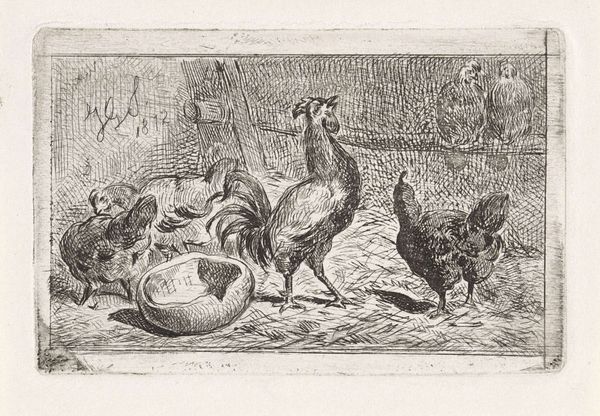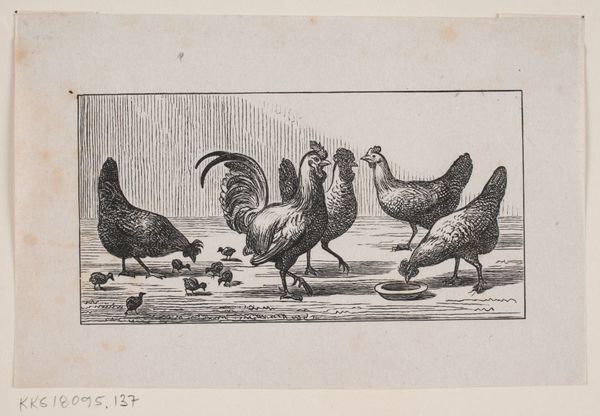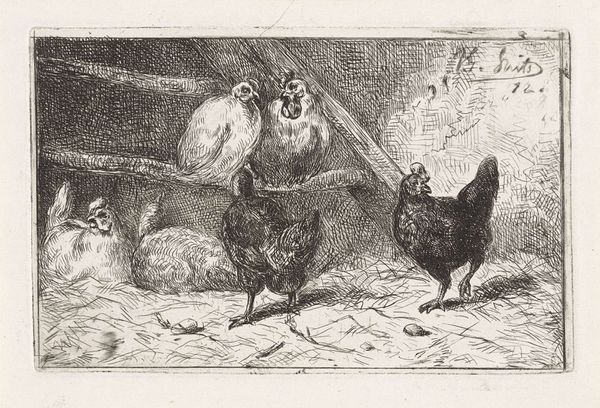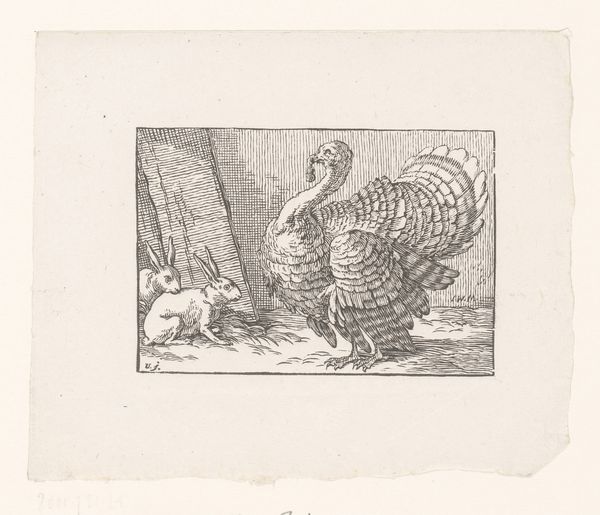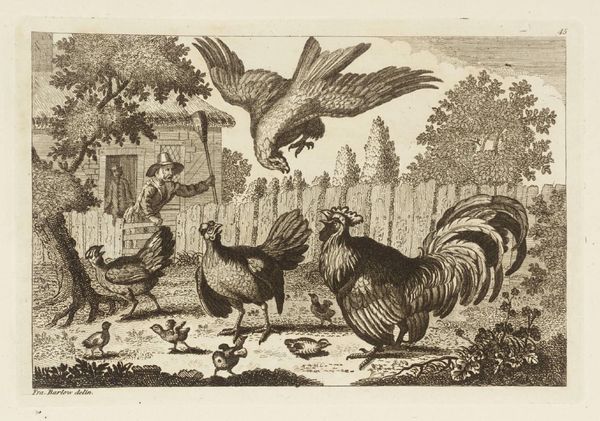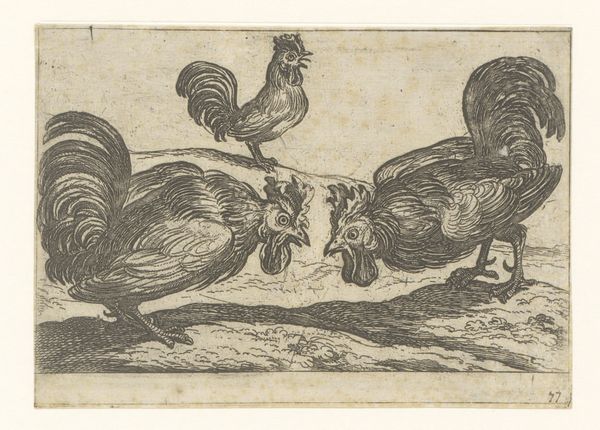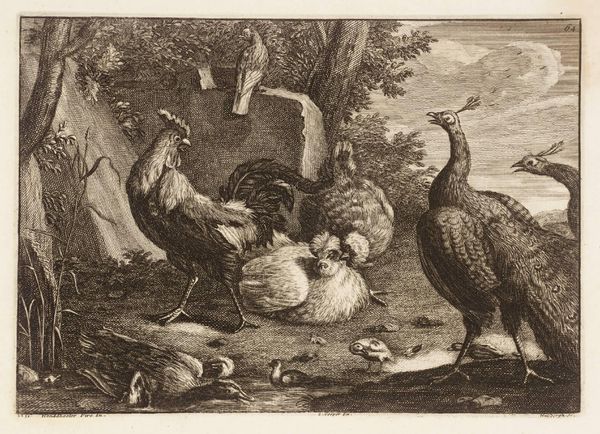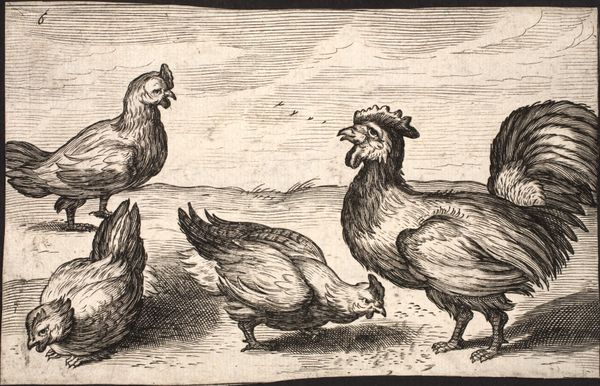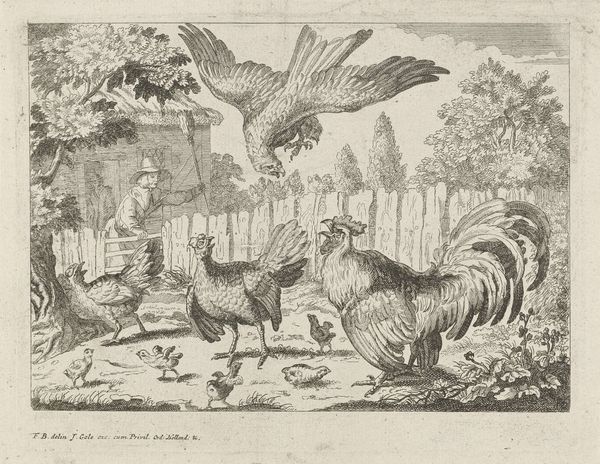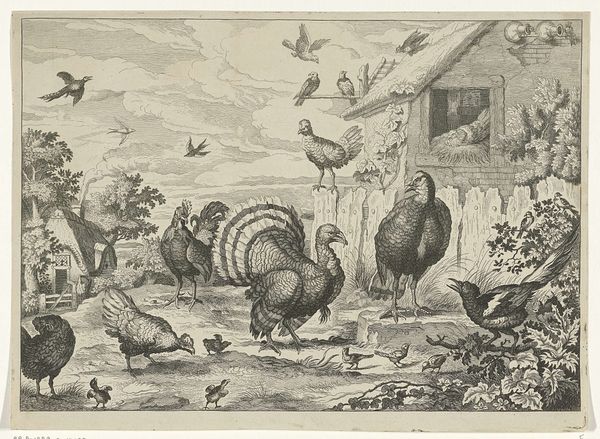
drawing, print, etching
#
drawing
#
animal
# print
#
etching
#
genre-painting
#
realism
Dimensions: height 58 mm, width 90 mm
Copyright: Rijks Museum: Open Domain
Curator: Well, what do we have here? This is "Kraaiende haan met kippen in een hok" or "Crowing Rooster with Hens in a Coop" by Jan Gerard Smits, created around 1872. It's a fascinating genre scene, rendered as an etching, giving it a beautifully detailed, almost tactile quality. Editor: It does have an interesting atmosphere. There's a starkness to the etching that evokes a sense of humble reality, a slice of life. The lines create this kind of frenetic energy, particularly in the rendering of the rooster. What statement might Smits be trying to convey about the working class and daily lives? Curator: Considering its historical context, the print underscores shifting agricultural practices during a time when industrialization had not completely eradicated rural traditions. We can see here that Smits' focus seems to center around domesticity through animal farming. Smits uses an etching that reminds me a lot of Daubigny, a popular print-maker from France during the 19th century. Editor: Absolutely, the process of etching itself is quite telling. The labour-intensive nature of printmaking seems so contrary to the mass production that was gaining momentum at the time. Does the choice to painstakingly etch a commonplace scene elevates this particular subject and call attention to certain working-class figures during an industrial era? The distribution networks would then dictate who gets to own such work of art and, ultimately, have a sense of control through art ownership and class recognition. Curator: That's an interesting angle. What resonates with me is its almost documentarian approach to rendering working-class subjects, through imagery, visible. Editor: Perhaps the rooster symbolizes vigilance, crowing its resistance against social erasure, its presence preserved in ink and paper? That sounds so cool. Curator: You always add flair, don't you? For me, it's a commentary on social mobility and awareness. Now, considering it is on display at a local historical institution, what are the ways in which you believe this impacts the public in their interpretation of this kind of works of art? Editor: Well, museums serve as validation for cultural memory. They solidify which stories are told and how we relate to them, even those seemingly simple like a barnyard scene. Its presence encourages conversations of a certain lifestyle that we have forgotten today! Curator: A powerful ending statement for today! It underscores the significance of revisiting art as a mirror reflecting our society, in constant evolution. Editor: Absolutely! A rooster's crow in ink echoes through the ages, doesn't it?
Comments
No comments
Be the first to comment and join the conversation on the ultimate creative platform.
